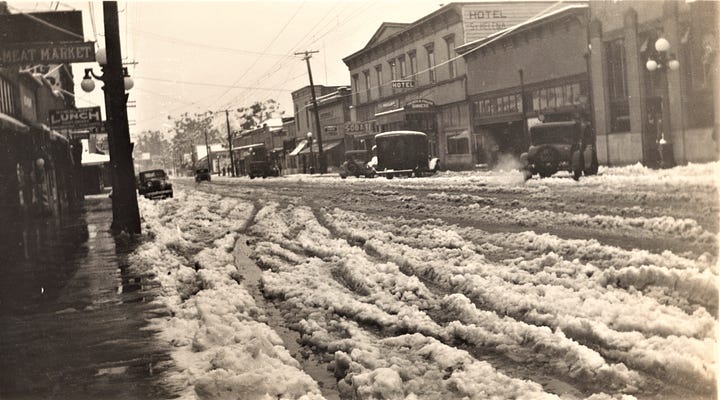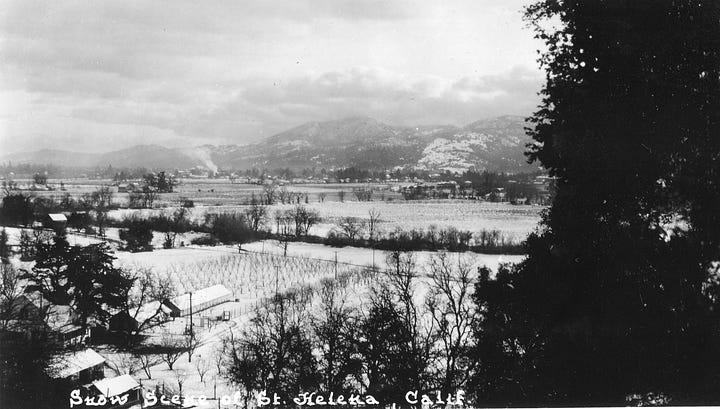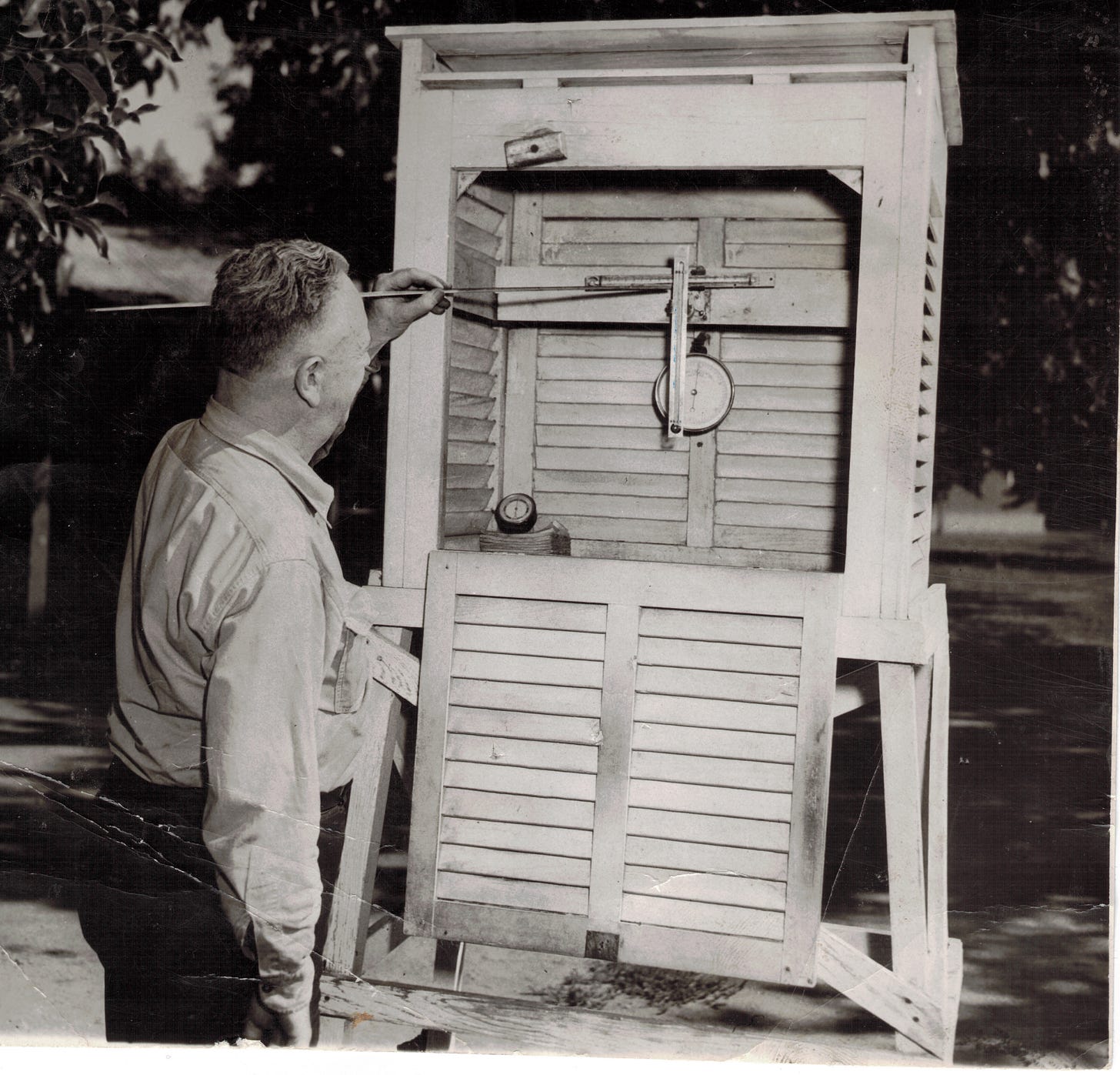ST. HELENA, Calif. — The weather office in St. Helena was established in 1907 with B.F. Kettlewell (merchant) the first observer. He served until August 1912, when E.E. Hooper (real estate agent) took over. Following in 1916 was W.F. Bornhorst, a well-known winemaker. In May 1918 Frank Mackinder (owner of the St. Helena Star) took over.
He was followed by Edwin Paulson (a printer at the Star) in 1921, and Paulson moved the weather station to the family ranch on Pope Street. He reported the weather observations for more than 50 years without being paid. Well, except when the rainfall on one day was more than 1 inch. Then he had to send a telegram to get paid 50 cents, later raised to 60 cents. He took measurements twice a day for over 60 years. He never traveled so that he could submit the daily weather report. Paulson was St. Helena’s first citizen of the year in 1971, and he died in 1983 at age 97.
Paulson reported the weather to newspapers in the area and kept records that were extremely critical. The data were used in court cases, construction, agriculture and other instances when precise rainfall and temperature information was needed. He also gave weekly reports to the California state weather statistician and to the San Francisco U.S. weather bureau.
Looking back at years of data, Paulson found the average rainfall for 1907-1961 was 33.06 inches. But the variations in our weather have been extreme. For 1923-24 it rained 13.59 inches, but in 1924-25 it rained 40 inches. For wet-year records consider 1913-14, when 58.96 inches fell, resulting in flooding. St. Helena flooded again in February 1940, when rainfall totaled 57.67 inches. These totals were dwarfed in 1983 with 75.4 and in 1998 when 77.22 inches fell. But then in 1976 we got only 12.39 inches and in 1977, 13.54.




According to Paulson’s records, the heaviest rainfall in one day was Dec. 19, 1955, when 5.76 inches fell in one day. The most rainfall in 24 hours was 6.83 inches on Jan. 21, 1967. Another exciting day was July in 1958, when a rare lightning storm dumped half an inch of rain in 15 minutes and six lightning bolts hit within city limits, scaring the citizenry.
We worry about climate change, but even in July 11, 1913, it was 115 degrees in St. Helena. On July 4, 1931, it was 114 degrees. Remember that when compared to 110 degrees here in 1961 and in 2020. In July 1961 there were nine days of over 100 degrees, including 110 on two consecutive days. In July 1925 we had nine days over 100, the highest being 105. Another high July was in 1931 with eight days over 100, the highest being 114. Recently the record high temperature was 115 on July 13, 1972.
By contrast the coldest ever recorded here was Dec. 11, 1932, when it was 11 degrees. That was the year of the big freeze, when tractors froze in the fields, bursting their engine blocks.
Although snow rarely falls in St. Helena, there is an annual average snowfall of 0.2 inches. However, in the beginning of January 1883, 4 inches of snow were on the ground, resulting in snowball fights and broken windows. On Mount St. Helena the snow was 16 inches deep. In March 1896, 3 inches covered the town. The most snowfall in one month was 4 inches, recorded in January 1974 and again in March 1976. The most snowfall in 24 hours was 4 inches on March 2, 1976.
If today’s story captured your interest, explore these related articles:
Mariam Hansen is research director for the St. Helena Historical Society.







I enjoyed reading the historical information.
And yes, there was extreme weather in the past, but sadly it is becoming more and more common as the climate changes. I hope we can change our ways before it's too late.
Miriam Hansen’s piece on St. Helena weather over time is most timely. Thank you.